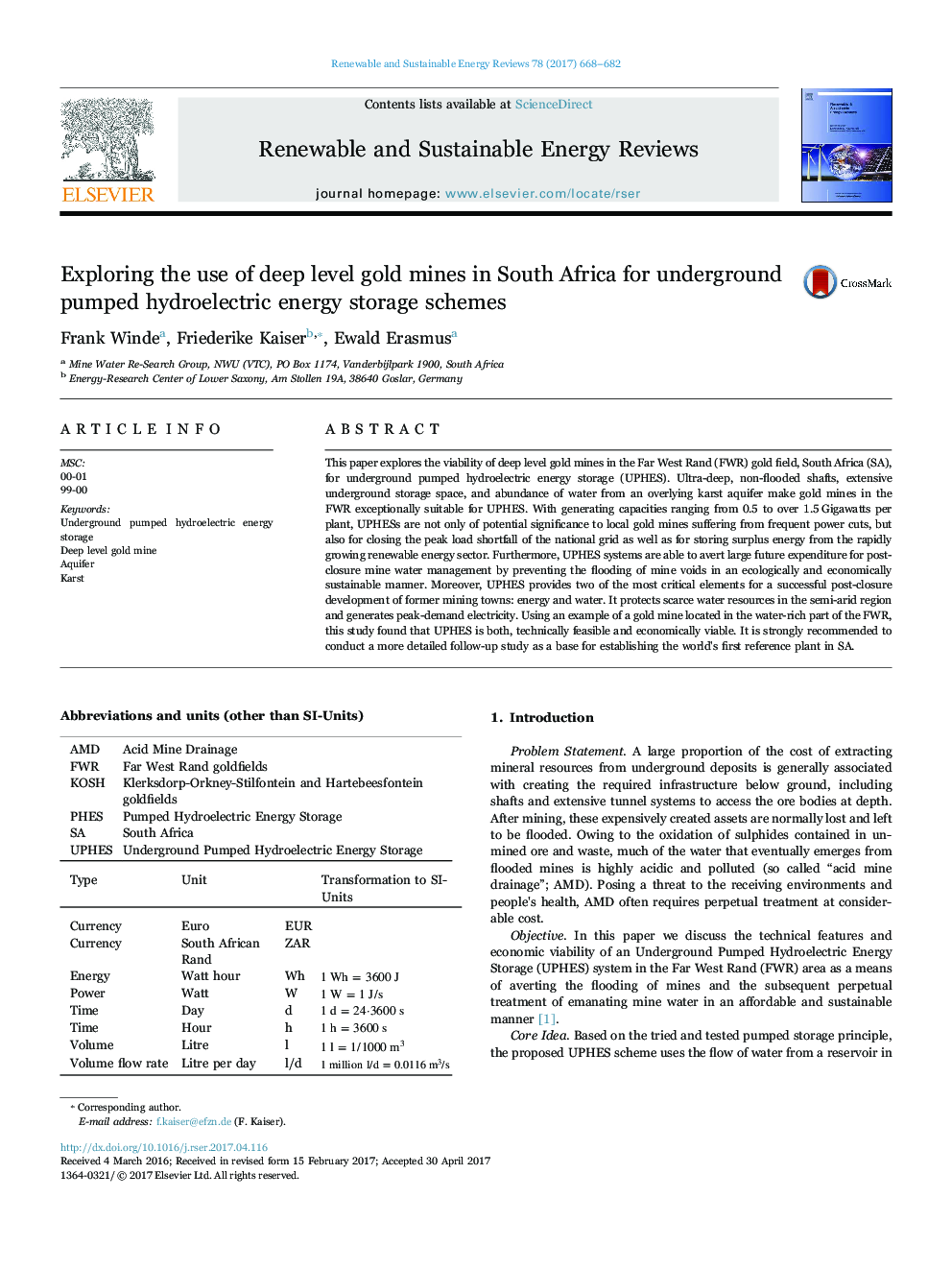| Article ID | Journal | Published Year | Pages | File Type |
|---|---|---|---|---|
| 5482493 | Renewable and Sustainable Energy Reviews | 2017 | 15 Pages |
Abstract
This paper explores the viability of deep level gold mines in the Far West Rand (FWR) gold field, South Africa (SA), for underground pumped hydroelectric energy storage (UPHES). Ultra-deep, non-flooded shafts, extensive underground storage space, and abundance of water from an overlying karst aquifer make gold mines in the FWR exceptionally suitable for UPHES. With generating capacities ranging from 0.5 to over 1.5Â Gigawatts per plant, UPHESs are not only of potential significance to local gold mines suffering from frequent power cuts, but also for closing the peak load shortfall of the national grid as well as for storing surplus energy from the rapidly growing renewable energy sector. Furthermore, UPHES systems are able to avert large future expenditure for post-closure mine water management by preventing the flooding of mine voids in an ecologically and economically sustainable manner. Moreover, UPHES provides two of the most critical elements for a successful post-closure development of former mining towns: energy and water. It protects scarce water resources in the semi-arid region and generates peak-demand electricity. Using an example of a gold mine located in the water-rich part of the FWR, this study found that UPHES is both, technically feasible and economically viable. It is strongly recommended to conduct a more detailed follow-up study as a base for establishing the world's first reference plant in SA.
Related Topics
Physical Sciences and Engineering
Energy
Renewable Energy, Sustainability and the Environment
Authors
Frank Winde, Friederike Kaiser, Ewald Erasmus,
